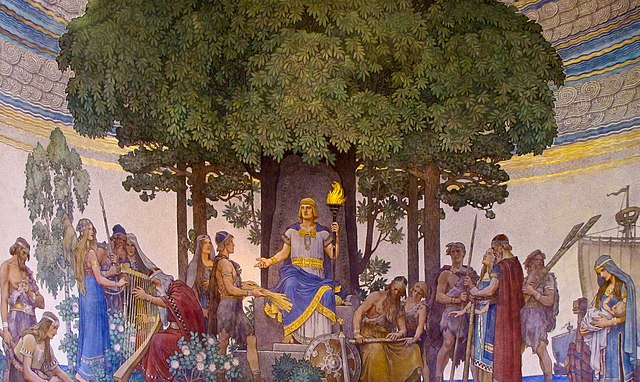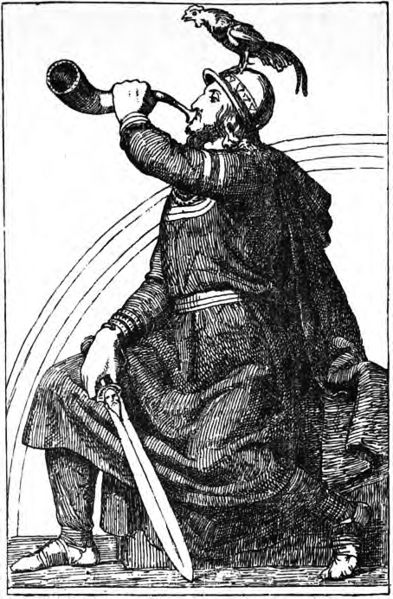In Norse mythology, Gjallarhorn is a horn associated with the god Heimdallr and the wise being Mímir. The sound of Heimdallr's horn will herald the beginning of Ragnarök, the sound of which will be heard in all corners of the world. Gjallarhorn is attested in the Poetic Edda, compiled in the 13th century from earlier traditional material, and the Prose Edda, written in the 13th century by Snorri Sturluson.
Bronze horn from 899-700 B.C. Påarp, Sweden.
Heimdallr blows into Gjallarhorn in an 1895 illustration by Lorenz Frølich
The Gosforth Cross panel often held to depict Heimdallr with Gjallarhorn
Detail of a copy of one of the two Golden Horns of Gallehus
In Norse mythology, Heimdall is a god. He is the son of Odin and nine mothers. Heimdall keeps watch for invaders and the onset of Ragnarök from his dwelling Himinbjörg, where the burning rainbow bridge Bifröst meets the sky. He is attested as possessing foreknowledge and keen senses, particularly eyesight and hearing. The god and his possessions are described in enigmatic manners. For example, Heimdall is golden-toothed, "the head is called his sword," and he is "the whitest of the gods."
Heimdallr brings forth the gift of the gods to humanity (1907) by Nils Asplund
Heimdall blows Gjallarhorn in an 1895 illustration by Lorenz Frølich.
Rig in Great-grandfather's Cottage (1908) by W. G. Collingwood
The cock Gullinkambi atop his head and the burning rainbow bridge Bifröst in the background, Heimdall blows into Gjallarhorn while holding a sword with a man's face on it (a reference to the "man's head" kenning). Illustration (1907) by J. T. Lundbye.








